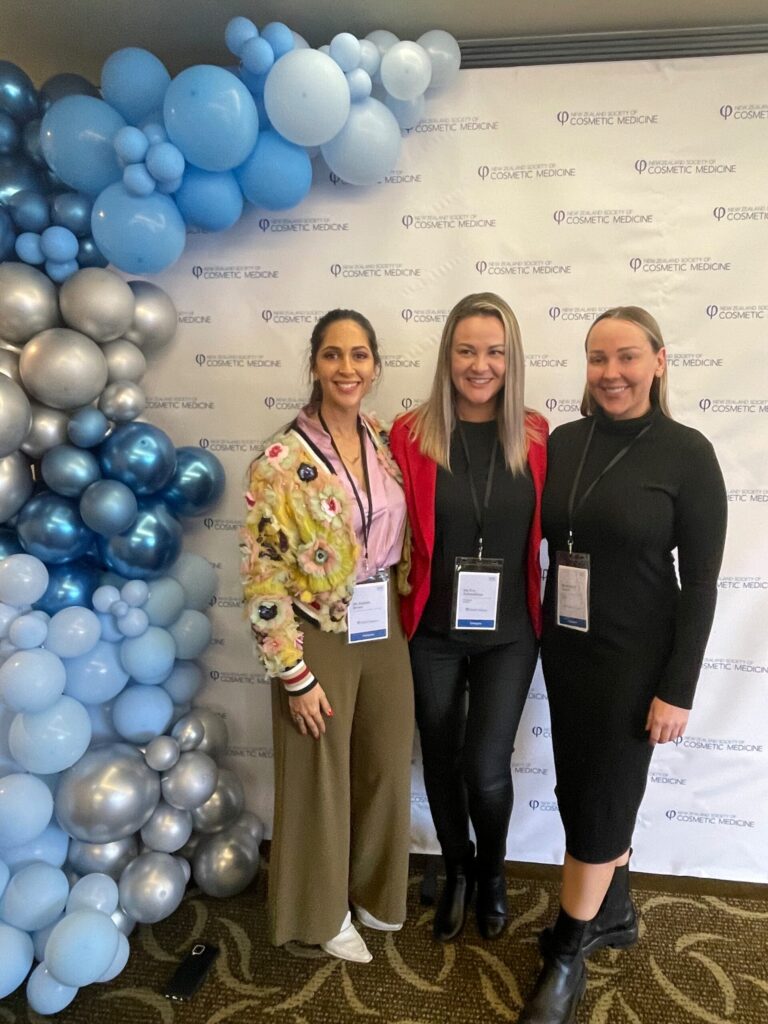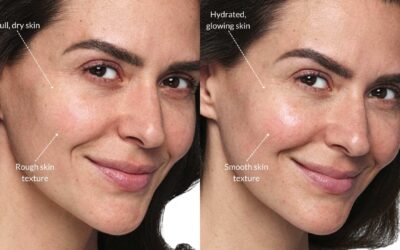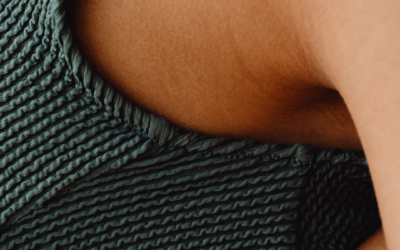Our nurses Beck and Eve travelled to Queenstown for the New Zealand Society of Cosmetic Medicine‘s annual conference. Running for three days, the conference was jam-packed full of presentations from international and national industry leaders, exhibitions and the chance to meet and catch up with industry counterparts from all over the country. They took us along for the ride on social media, but we wanted to catch up with them both to hear about their favourite moments, latest innovations in the industry and biggest learnings…
EVE’S RECAP…
The NZSCM Conference was a fantastic opportunity to expand my horizons on different techniques and new procedures. One aspect that I found particularly interesting is how intradermal (shallow or superficial) BotoxⓇ can help to reduce sebum secretion (oiliness), decrease pore size, and increase skin quality. I believe this could be an extra arrow in our bow to achieve even better results in combination with dermal fillers and medical-grade skincare.
Additionally, it was amazing to see the different ways clinicians approach the same treatment – I especially enjoyed Dr Steven Liew’s approach to tear-troughs. Having the opportunity to chat with him and gather some of his extensive knowledge was hugely valuable.
Profhilo was extensively discussed at the conference and although it is a relatively new product to the market, research has proposed that it slows down the natural degradation of fat cell cycles, therefore, slowing the loss of volume that naturally occurs as we age. Dr Cat was one of the first to take part in the NZ trials of Profhilo several years ago and it’s a treatment that we offer at The Face Place so it was great to further my knowledge of the product and its potential!
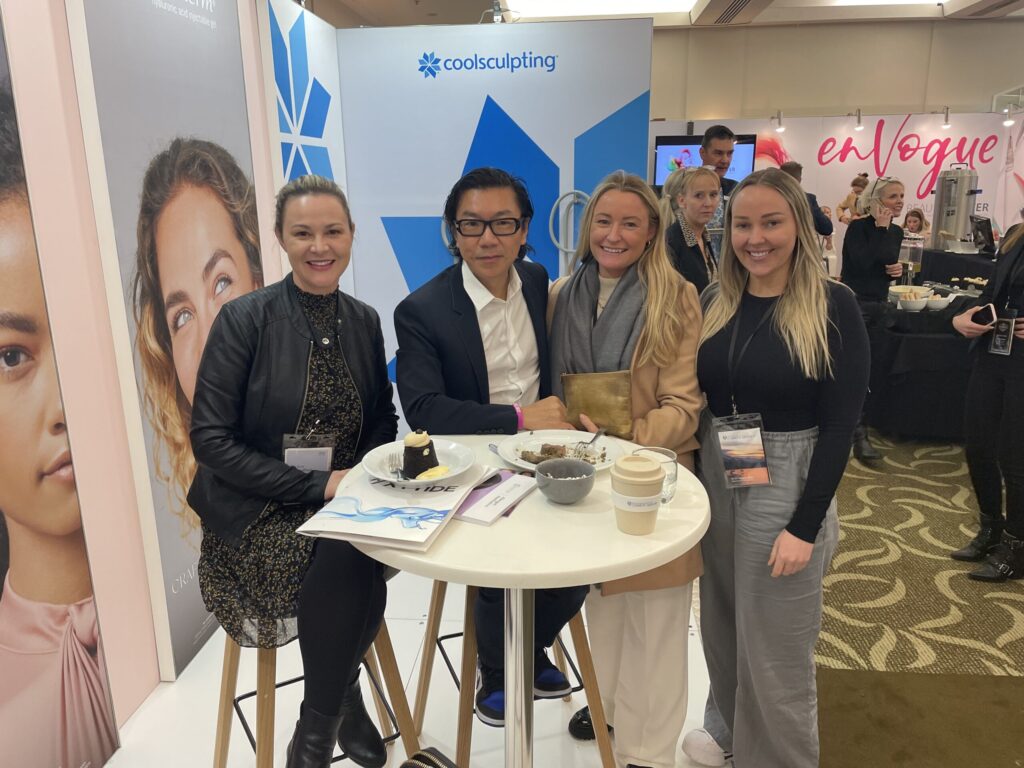
BECK’S RECAP…
The NZSCM Conference was an incredible learning experience for me. It reignited my passion for cosmetic medicine and allowed me to connect with some of the world’s leading cosmetic injectors.
During the conference, a number of topics were discussed including the treatment of filler-associated vascular events (issues that can occasionally arise as dermal filler travels through the blood vessels), the use of ultrasound in cosmetic medicine, Botulinum toxin immunogenicity (when someone develops immunity to Botox), and the use of a multi-modal approach to facial aging.
I especially enjoyed the presentations on tear-trough filler and how the under-eye area ages differently among people of different ages, ethnicities and genders. In particular, I enjoyed watching Dr Paul Rosser‘s approach to tear-troughs and how he determines whether the patient is more suited for filler treatment or surgery.
I’m excited to bring these learnings and points of discussion back to the team at TFP!
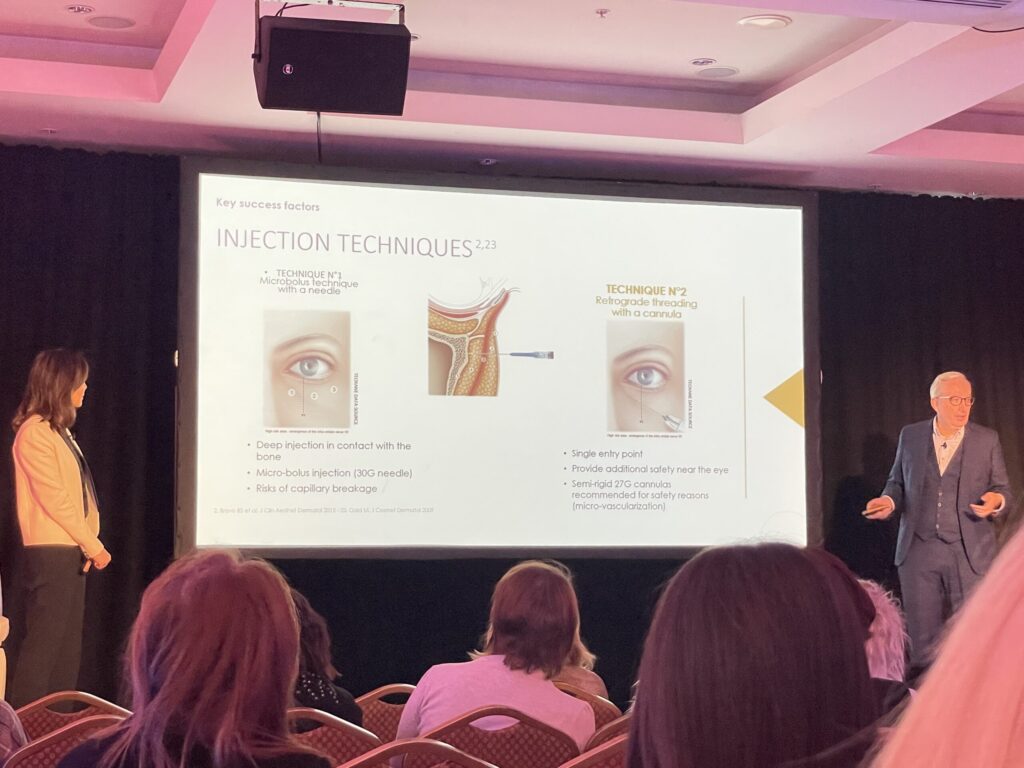
With love,
Eve & Beck ❤️



